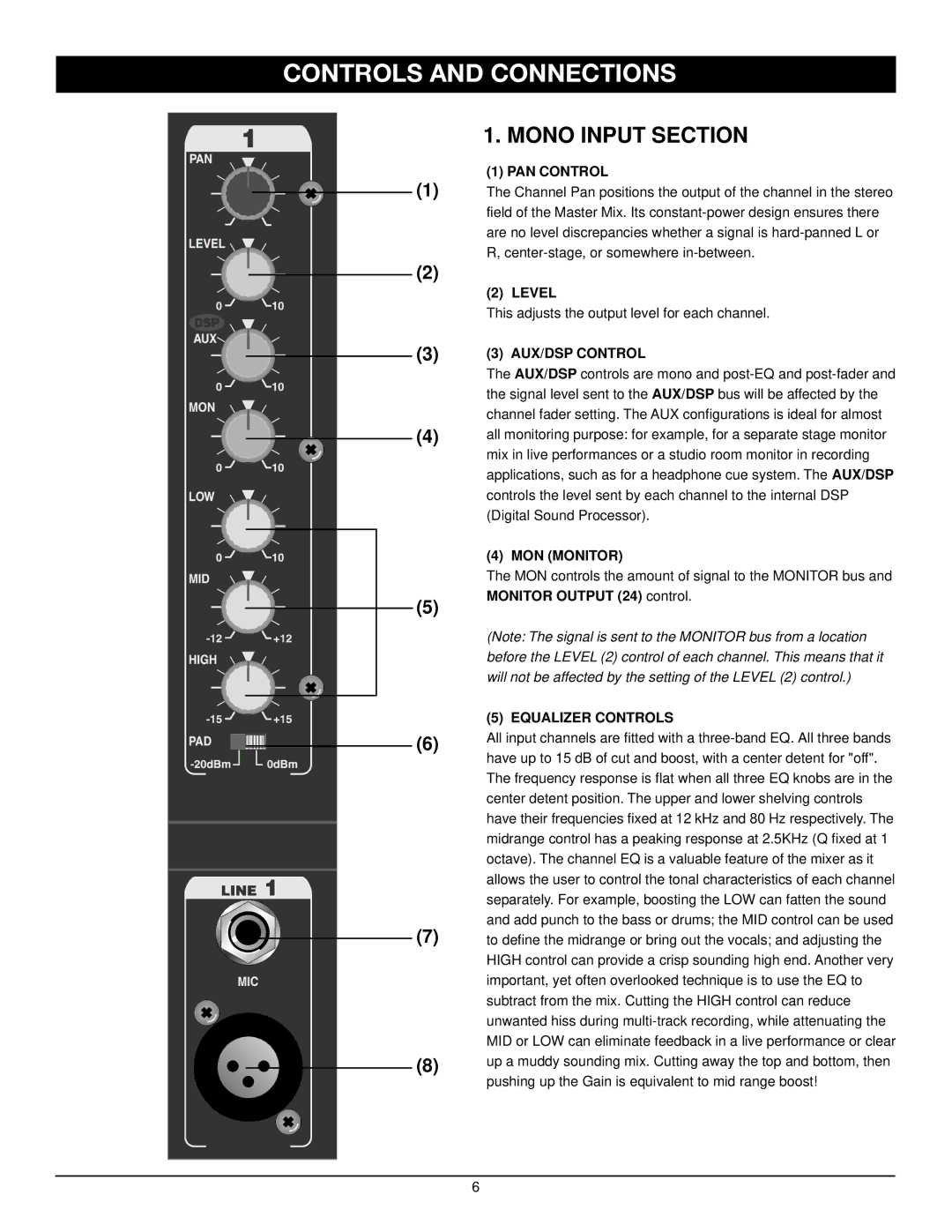
CONTROLS AND CONNECTIONS
1.MONO INPUT SECTION
(1)PAN CONTROL
(1)
(2)
The Channel Pan positions the output of the channel in the stereo field of the Master Mix. Its
(2) LEVEL
This adjusts the output level for each channel.
(3)(3) AUX/DSP CONTROL
The AUX/DSP controls are mono and
(4)all monitoring purpose: for example, for a separate stage monitor
mix in live performances or a studio room monitor in recording applications, such as for a headphone cue system. The AUX/DSP controls the level sent by each channel to the internal DSP (Digital Sound Processor).
| (4) MON (MONITOR) | |
| The MON controls the amount of signal to the MONITOR bus and | |
(5) | MONITOR OUTPUT (24) control. | |
| ||
| (Note: The signal is sent to the MONITOR bus from a location | |
| before the LEVEL (2) control of each channel. This means that it | |
| will not be affected by the setting of the LEVEL (2) control.) | |
| (5) EQUALIZER CONTROLS | |
(6) | All input channels are fitted with a | |
have up to 15 dB of cut and boost, with a center detent for "off". | ||
| ||
| The frequency response is flat when all three EQ knobs are in the | |
| center detent position. The upper and lower shelving controls | |
| have their frequencies fixed at 12 kHz and 80 Hz respectively. The | |
| midrange control has a peaking response at 2.5KHz (Q fixed at 1 | |
| octave). The channel EQ is a valuable feature of the mixer as it | |
| allows the user to control the tonal characteristics of each channel | |
| separately. For example, boosting the LOW can fatten the sound | |
(7) | and add punch to the bass or drums; the MID control can be used | |
to define the midrange or bring out the vocals; and adjusting the | ||
| HIGH control can provide a crisp sounding high end. Another very | |
| important, yet often overlooked technique is to use the EQ to | |
| subtract from the mix. Cutting the HIGH control can reduce | |
| unwanted hiss during | |
| MID or LOW can eliminate feedback in a live performance or clear | |
(8) | up a muddy sounding mix. Cutting away the top and bottom, then | |
| pushing up the Gain is equivalent to mid range boost! |
6
